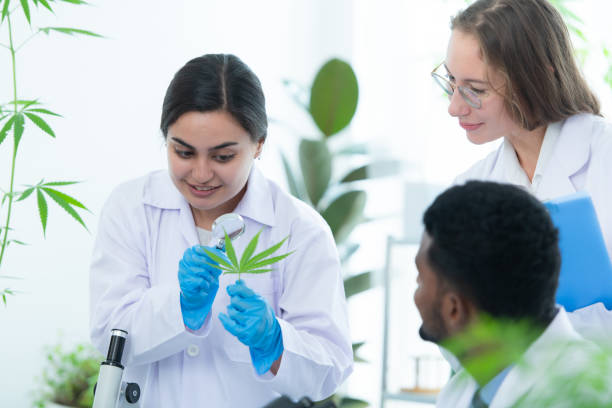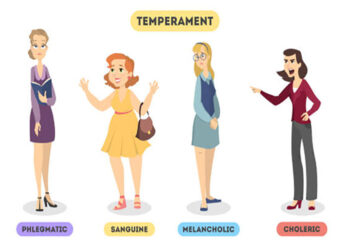
Cannabinoids are a class of natural chemicals that have a wide range of effects on the body system. They have an overall effect on your health, and it is important you know these effects before or while you take them. In this post, I will be telling you more about cannabinoids, in case you didn’t know much, and you will see how they affect your health in general.
First of all, if you are wondering how verifiable this information would be, let me inform you that I am a medical practitioner who had spent close to two years studying psychoactive substances, of which cannabis and cannabinoids are examples.
What are cannabinoids?
If you have heard the name ‘cannabis’, understanding what cannabinoids are becoming a whole lot easier. Cannabinoids refer to any substance that produces similar effects on the brain as cannabis. I assume that you know how cannabis makes people feel. However, beyond that, you will learn more about the biochemical mechanisms of how this occurs.
Cannabis is derived from the hemp plant (Cannabis sativa), also known as marijuana, Indian hemp, weed, etcetera. The plant is rich in chemical substances known as tetrahydrocannabinol (THC) and cannabidiol. It is these substances that make people ‘feel high’ when they consume the plant in any form.
Cannabinoids, by extension, refer to any other substance, natural or synthetic, that produces similar effects as the hemp plant in the body. They also refer to the different consumable forms the cannabis products can be made into. Also, it is important to note that several species of cannabis plants exist, but the broad term ‘cannabinoids’ is used to refer to all such compounds structurally resembling cannabis and producing the same effects in the body.
Types of cannabinoids
The cannabis plant produces about 80 to 100 cannabinoids and about 300 other non-cannabinoid chemicals. Of the cannabinoids, only two – delta-9-tetrahydrocannabinol (THC) and cannabidiol (CBD) – are the most potent, but it has been shown that THC is what is responsible for the acute high effect experienced when cannabis is consumed.[1]Potency and Therapeutic THC and CBD Ratios: U.S. Cannabis Markets Overshoot – PMC
Cannabinoids can be classified based on their source as natural and synthetic. Natural cannabinoids are those derived from plant extracts as discussed above, while synthetic cannabinoids are created in the lab by artificially producing molecules similar to naturally occurring compounds. Synthetic cannabinoids have the added benefit of being augmented by the addition or removal of a side chain that makes the whole molecule more or less desirable.
Based on the formulation of cannabinoids, they can be available as orally-consumable oils (as tinctures, oral sprays, and dietary supplements), topical creams, salves, and lotions, as gummies, candies, and beverages, as well as inhalable vapes and vape oils.
Cannabinoids have also been classified into groups based on their purity; CBD isolates contain only CBD with no other constituents, full-spectrum cannabinoids which also includes THC, and broad-spectrum cannabinoid which contain a relatively high amount of CBD but low THC levels.
How do cannabinoids make one feel?
Cannabinoids generally produce a ‘high’ and ‘mellow‘ effect for the user. During this time, the user feels less pain, experiences lesser anxiety, and seems to be ‘on top of the world’.
As mentioned earlier, THC produces markedly different effects from CBD. The strong psychoactive effect of cannabis is attributed to THC but not to CBD. CBD is thought to have an anti-psychoactive effect aimed at balancing out the acute intoxication caused by natural cannabinoids. CBD also helps to relieve anxiety and has also been shown to have analgesic effects.
Cannabinoids have been shown to have other beneficial effects. They could help reduce stress, chronic pain, and nausea occurring after the administration of chemotherapy. Recent research has shown that CBD can act on B cells of the body’s immune system to modulate their activity. Thus, for chronic health conditions causing pain, stress, and anxiety, CBD could be incorporated into the daily diet of the individual.
Uses of Cannabinoids
The uses of cannabinoids can be discussed under the following sub-headings:
- Medical uses of cannabinoids
- Recreational uses of cannabinoids
Medical uses of Cannabinoids
Cannabinoids, due to their potent psychoactive effects and their risk of causing addiction in user, is often best administered under a doctor’s supervision. It should be noted that CBD is the major constituent with the beneficial medical uses you shall see below, not THC.
A doctor might prescribe cannabinoids for any of the following conditions:
1. Epilepsy
Cannabinoids (especially CBD) have been shown to have positive effects on seizure-inducing conditions like Dravet syndrome and Lennox-Gastaut Syndrome. CBD oil has been shown to be helpful in reducing epileptic symptoms in individuals dealing with these conditions. It, however, does not abort seizures in those already having an episode. Due to its effectiveness, the US Food and Drug Administration (FDA) has approved the first-ever cannabis-based medicine, Epidiolex, in the treatment of seizure disorders.
2. Anxiety
According to Loflin and Whitton in their study, Cannabidiol (CBD) may help alleviate different types of anxiety and anxiety disorders. These include generalized panic disorder (GPD), obsessive-compulsive disorder that interferes with daily functioning (OCD type C), social phobia involving intense fear, and post-traumatic stress disorder (PTSD). However, further evidence is required to substantiate these claims.
3. Depression
Biological studies have shown that low serotonin levels are implicated in the causation and development of depression. By modulating these receptors, CBD can produce beneficial anti-depressant effects. A study has shown that two doses of cannabidiol were helpful in elevating mood in depressed people with low brain serotonin activity, but not others with normal serotonin levels
4. Sleep problems
Insomnia is a prevalent condition in the United States. It may be a sign of other underlying conditions, and inadequate sleep has been reported among a third of adults in the United States. The ensuing consequences of sleep problems include health problems like obesity, depression, etcetera. A study, however, showed that 65% of adults in the united states who used CBD for six weeks noticed improvements in their sleep patterns and quality.
5. Post-traumatic Stress Disorder (PTSD)
PTSD is a severe condition characterized by symptoms of re-experiencing traumatic events, intrusive thoughts, anxiety, and avoidance of similar situations. People having PTSD are often those who have had a traumatic experience in the past – war veterans, rape victims, abused children and adolescents, and so on.
Coping with PTSD can be quite challenging. Support from family and friends would be highly recommended. In addition, some research has suggested that an oral dose of CBD has helped improve the symptoms of PTSD including flashbacks, anxiety, and mood.
6. Chronic Pain
Cannabinoids, especially CBD, have potent anti-inflammatory and analgesic properties and can serve as relief for chronic pain conditions. They do this by directly blocking pain transmission in peripheral nerves but THC in marijuana has not been shown to have potent analgesic effects.[2]MARIJUANA AND PAIN – Marijuana as Medicine? – NCBI Bookshelf[3]Pain | Health Effects | Marijuana | CDC
Cannabinoids can also help in pain relief by relaxing the mind and distracting the individual from the pain, thus allowing the user to sleep or rest.
Recreational Uses of Cannabinoids
Recreational uses of cannabinoids have some of the commonest cannabinoid usage globally. As the name implies, the user uses it as a form of recreation, to derive enjoyment and pleasure from its psychoactive effect. People who use cannabinoids for recreation desire its high and mellow effect, and they may get addicted to it in the process.
Because of the addictive nature of cannabinoids, their recreational use has been legally restricted in many parts of the world. In recent times, however, there have been demands to legalize the substance in many states and countries, but it still has not gained full legal acceptance worldwide.
In the United States, the federal government recognizes two forms of Cannabis sativa plant: hemp and marijuana. Hemp is the least processed form of the cannabis plant and contains high levels of cannabidiol and traces of delta-9-tetrahydrocannabinol. Marijuana, on the other hand, contains higher levels of THC over 30% while CBD levels remain low (just about 0.2%).[4]Changes in Cannabis Potency over the Last Two Decades (1995-2014) – Analysis of Current Data in the United States – PMC
In 2018, the Agriculture Improvement Act (also known as the Farm Bill) legalized cannabinoids derived from hemp as long it contains no more than 0.3% THC by dry weight. Cannabinoids from the marijuana plant remain illegal under the Controlled Substances Act since the Drug Enforcement Administration (DEA) classifies marijuana as a Schedule I drug because it has no currently accepted medical use but has a high potential for abuse.
Despite these legislations, enthusiasts are continuously finding supporting evidence for the legalization of either form of cannabinoids, especially for use as a substance of recreation. Some states allow users to cultivate their own cannabis for recreational reasons. Due to their ease of cultivation, auto-flowering seeds have garnered more interest among home growers. Thus, enabling enthusiasts to have a personal supply of recreational cannabinoids while adhering to the legal regulations in their respective states.
How Cannabinoids Affect Your Health
World Health Organization (WHO) defined health as a complete state of physical, social, and mental well-being in an individual, and not merely in the absence of disease or infirmity. We will now look at how cannabinoids affect each of the components of health.
The aim of this article about cannabinoids is to give you the necessary information about cannabinoids before you begin consuming them, or if you are already consuming them for any reason but without a good knowledge of them.
- Management of side effects of cancer chemotherapy, especially nausea, and vomiting.[5]Health Effects of Marijuana | Health Effects | Marijuana | CDC
- Short-term use of oral cannabinoids has been shown to improve patient-reported spasticity symptoms in patients with multiple sclerosis (MS)-related spasticity.[6]The Health Effects of Cannabis and Cannabinoids: The Current State of Evidence and Recommendations for Research – Europe PMC
- Smoked marijuana may deliver some other harmful substances asides from THC and CBD that can cause cancer (carcinogenic).
- Marijuana usage before the age of 18 can impair memory, attention, and learning.
- There is a high chance of addiction and dependence with the use of cannabinoids, particularly the THC-rich ones.
- Cannabinoids can cause hypertension in chronic use.
- Edible cannabinoids infused into foods and supplements have a high chance of causing toxicity, as they take time to produce their first effect and people may be tempted to consume a lot of it before its time of action.
- People who use cannabinoids (especially marijuana or THC) are more likely to develop psychosis and long-lasting mental disorders.
- Cannabis and cannabinoids can cause accidental injury from acute intoxication.[7]Wayne Hall. The adverse health effects of cannabis use: What are they, and what are their implications for policy? doi:10.1016/j.drugpo.2009.02.013
- Chronic bronchitis and other respiratory conditions are more commonly reported among cannabis smokers than non-smokers.
- There is a link between cannabis use and the use of other psychoactive substances. That means cannabis users are likely to use other substances as well, further increasing the risks of harmful effects.
- Other side effects like anxiety, mood changes, appetite changes, and dizziness, have been associated with cannabis use.
Conclusion
Cannabinoids have found beneficial uses in chemotherapy-induced nausea and vomiting, multiple sclerosis, and to some extent, pain management. However, it has several injurious effects that may discourage its use. Recreational use of cannabinoids, which refers to their use only for pleasure, is more prevalent than medical use.
Currently, individuals and groups are advocating for the full legalization of cannabis and cannabinoids but it is important to examine the benefits and disadvantages before you decide to consume them in any form.
References
| ↑1 | Potency and Therapeutic THC and CBD Ratios: U.S. Cannabis Markets Overshoot – PMC |
|---|---|
| ↑2 | MARIJUANA AND PAIN – Marijuana as Medicine? – NCBI Bookshelf |
| ↑3 | Pain | Health Effects | Marijuana | CDC |
| ↑4 | Changes in Cannabis Potency over the Last Two Decades (1995-2014) – Analysis of Current Data in the United States – PMC |
| ↑5 | Health Effects of Marijuana | Health Effects | Marijuana | CDC |
| ↑6 | The Health Effects of Cannabis and Cannabinoids: The Current State of Evidence and Recommendations for Research – Europe PMC |
| ↑7 | Wayne Hall. The adverse health effects of cannabis use: What are they, and what are their implications for policy? doi:10.1016/j.drugpo.2009.02.013 |
















